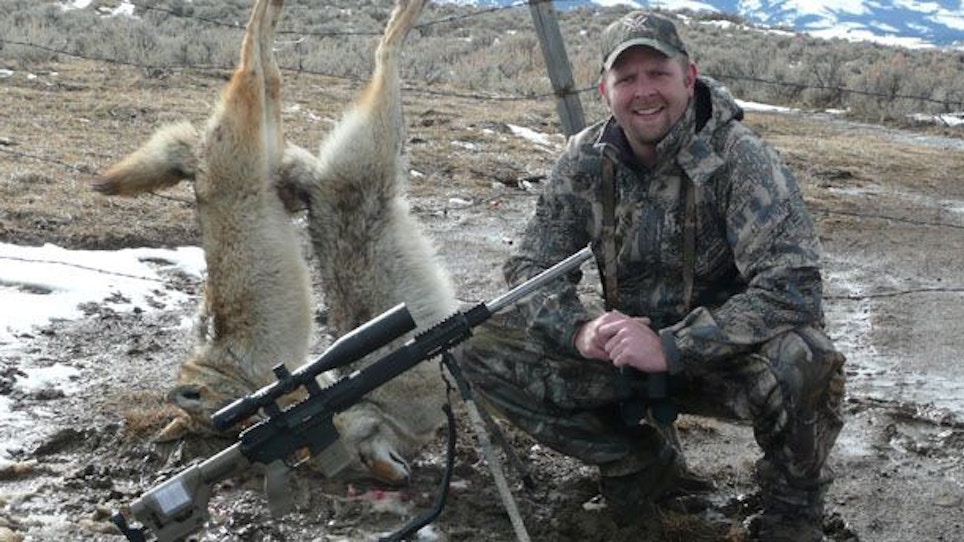We walked quietly through a small pine pocket on approach to our stand. We had located several coyotes in the area just a few hours earlier. My friend was new to calling and I wanted him in the “shooters seat.” I softly whispered where I believed the coyotes would appear and motioned him to sit down. I moved up-wind about 40 yards and started my calling sequence.
After about five minutes a coyote appeared and was headed right into my partners lap. He acted like a seasoned pro as he stopped the coyote with a bark and knocked him flat. I blew a few sequences of coyote pup distress then continued with my rabbit squalls. Several minutes later another coyote appeared from the same direction. Unfortunately for the coyote, his fate was the same as the first.
As we celebrated our success we discussed several factors that helped us predict the coyotes approach. Anyone who has called coyotes knows it’s more of an educated guess than a prediction. Over the years I’ve learned there are several key elements to determining how a coyote will approach your stand.
Where Are They Coming From?
First, you must know where they are. I spend several hours the night before my hunt locating coyotes with vocalizations. Once I have them located I select my stands, keeping in mind where they will come from. Another successful tactic is opening my stands with a young interrogation howl. Coyotes in the area will often howl back telling me where they are. This helps me focus on the area they’re coming from.
It’s important to remember that nothing is absolute when calling predators. All we can do is try to put the odds in our favor. I’ve found that identifying their location helps me predict their approach the majority of the time.
Where Are They Going?
As a general rule coyotes circle to the down-wind side as they approach. They use their nose to determine if what they’re hearing is real. I try to use this to my advantage.
I like stands that give me a view of the down-wind side. I may call the same stand multiple times throughout a season and sit in a different place each time. It depends on which way the wind is blowing on any given day. Lack of attention to the wind is a cardinal sin for coyote hunters.
How Will They Get There?
Over the years I’ve observed a few coyote behaviors that help determine how they’ll approach. First, they typically follow the path of least resistance. This is especially true in thick cover. I look for cattle trails, game trails, washes, ravines, fence lines, or even two track roads they might travel.
In the deep snow of Montana, coyotes often follow the south-facing ridgelines where there is little or no snow. These areas are typically bare when the snow is deep everywhere else.
Another observation is coyotes frequently look for a vantage point. They like to look over the area before committing to the call. Educated coyotes might sit and watch a while to determine if the dying rabbit is for real. This is where a decoy can really come in handy.
No Substitute For Experience
Knowing in advance where coyotes will appear is far from a perfect science. It’s still hunting and they’re still a predator. However, if you follow these guidelines you might be surprised just how often you can predict where they’re going to show up. No amount of information is equal to time in the field.
Consistently predicting how coyotes will approach your stand comes with years of experience and lessons learned. Get out there and do it.
About The Author
Dustin Butler has been calling predators for more than 20 years. He has competed in coyote calling contests around the Western U.S. for years and has consistently excelled including many wins and top finishes. He enjoys sharing his knowledge of predator hunting with others through calling seminars and magazine articles. To learn more visit www.predatordown.com.






